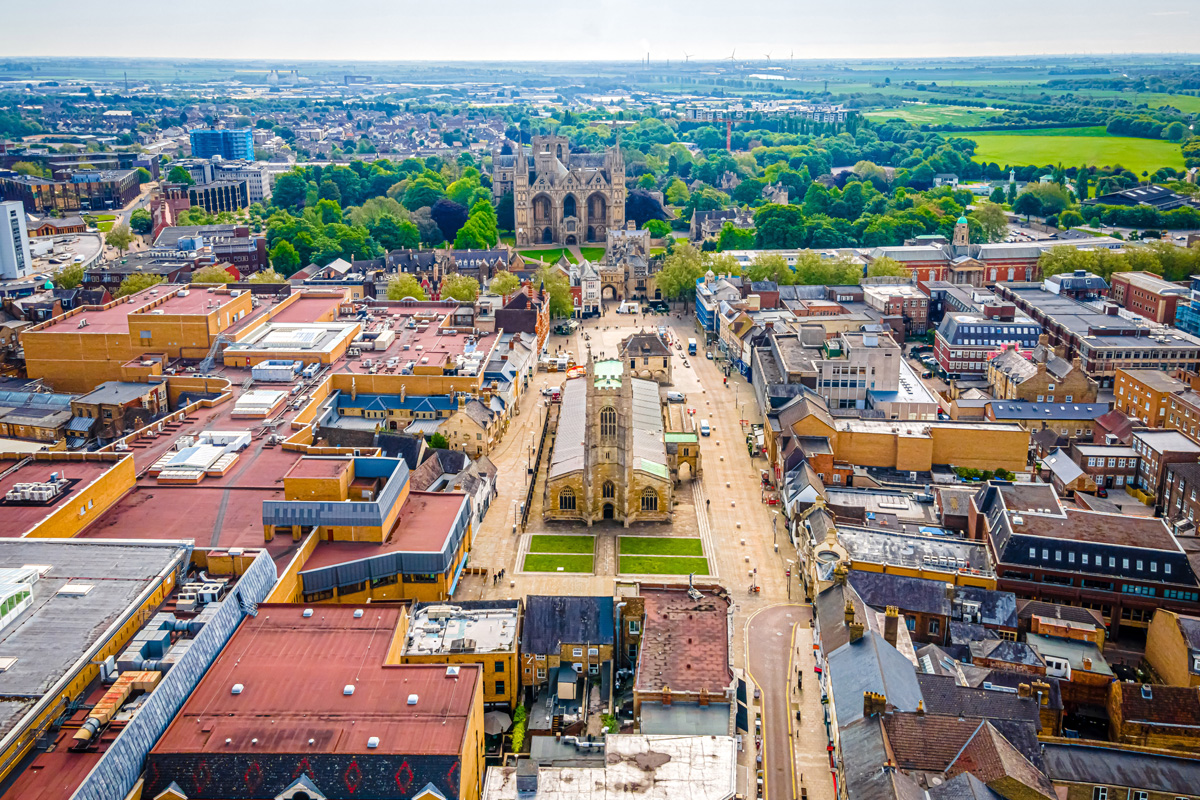- UK /
- Peterborough
Discover The Latest Property Statistics and Sold House Prices In Peterborough, Cambridgeshire.
Gain a competitive edge in the Peterborough, Cambridgeshire housing market using our extensive data on house prices with local insights and trends.
See more data for postcode districts in Peterborough:

PETERBOROUGH
Property market data for Peterborough in Cambridgeshire. Compare data on the district postcode areas of Peterborough including sold house price growth, long let gross rental yield, buyer demand, average asking price, average price per square foot and average rental prices. Explore Peterborough with a range of tools to help you understand the local market.
In the centre of Peterborough, PE1 long-let gross yield is 5.1%, the average rental price is £210 the average asking price is £215,274 and the average price per square foot is £228. There are currently N/A completed property sales per month, with a turnover of 12.0%. Toggle between postcode districts to see how different areas compare.
BUY-TO-LET PROPERTY INVESTMENT IN PETERBOROUGH
Understanding the Housing Market in Peterborough: Key Facts and Figures
Located in the county of Cambridgeshire in the East of England, Peterborough lies on the River Nene, approximately 75 miles away from London, 30 miles away from Cambridge and 85 miles away from Birmingham. While the area in which Peterborough sits has been populated for thousands of years, it was the opening of the railway between London and York that truly put it on the map, transforming it, from a small market town, into an industrial centre, best known for producing bricks, of which it was the UK's leading supplier, for most of the twentieth century. Like many places that grew during the Industrial Revolution, it saw an industrial decline but, when it was designated a New Town, in 1967, saw a large influx of people and investment and in response, service-sector industries swooped in to pick up the slack. Today, Peterborough is the biggest city in the East of England with excellent connections to the rest of the country. It is important to note that it sits within two of the fastest-growing economic areas which are the Oxford-Cambridge Arc and the UK Innovation corridor, which spans those cities that lie in between Peterborough and London. The main industry is food processing but it is also a centre for advanced manufacturing, warehousing, construction, digital and IT. New gigabit infrastructure has been partially responsible for a recent, local digital revolution which is increasingly powering the adoption of artificial intelligence, automation and the creation of new digital factories as well as deepening the connections the city has to the rest of the world. Peterborough is also developing quickly as a cultural centre with plenty of new developments. ARU Peterborough is a new University which will be developed over the next 10 years, there has been considerable work done at the train station and a new Museum at Must Farm. There is a cultural strategy in place, the aim of which is to make Peterborough a place that is celebrated for its cultural vibrancy and a place where people want to live, study, work and invest. While the Norman Cathedral is the biggest tourist attraction, the history and culture of the city can be found in the newly refurbished Peterborough Museum and Art Gallery, at the Flag Fen Archaeological Park and Burghley House. The city is also a youthful one, with 40% of the population under the age of 16. And while land has increased in price by 40% in the last decade, the earnings-to-house price ratio makes Peterborough very affordable, particularly for those who live in the city but commute to London, a journey that takes only 40 minutes. CBRE recently looked into London's commuter towns and found Peterborough to be the most affordable of all. But there is more to affordability than land and house prices. Peterborough, through the PIRI Project (Peterborough Integrated Renewables Infrastructure), the city boasts more roof-mounted solar panels than any other city or town in the UK and has further plans for Net Zero 2050 that will considerably reduce household bills for its residents.